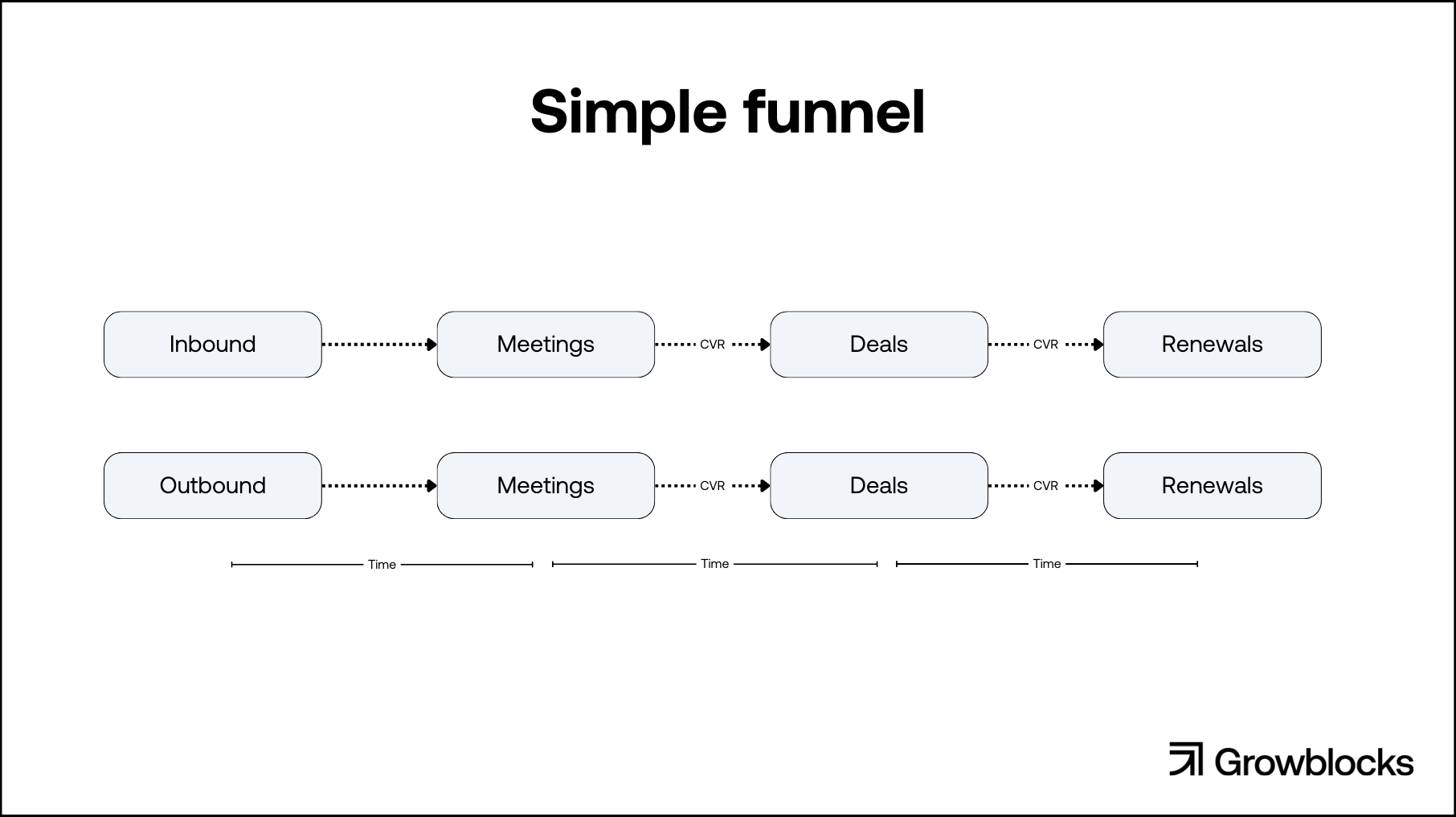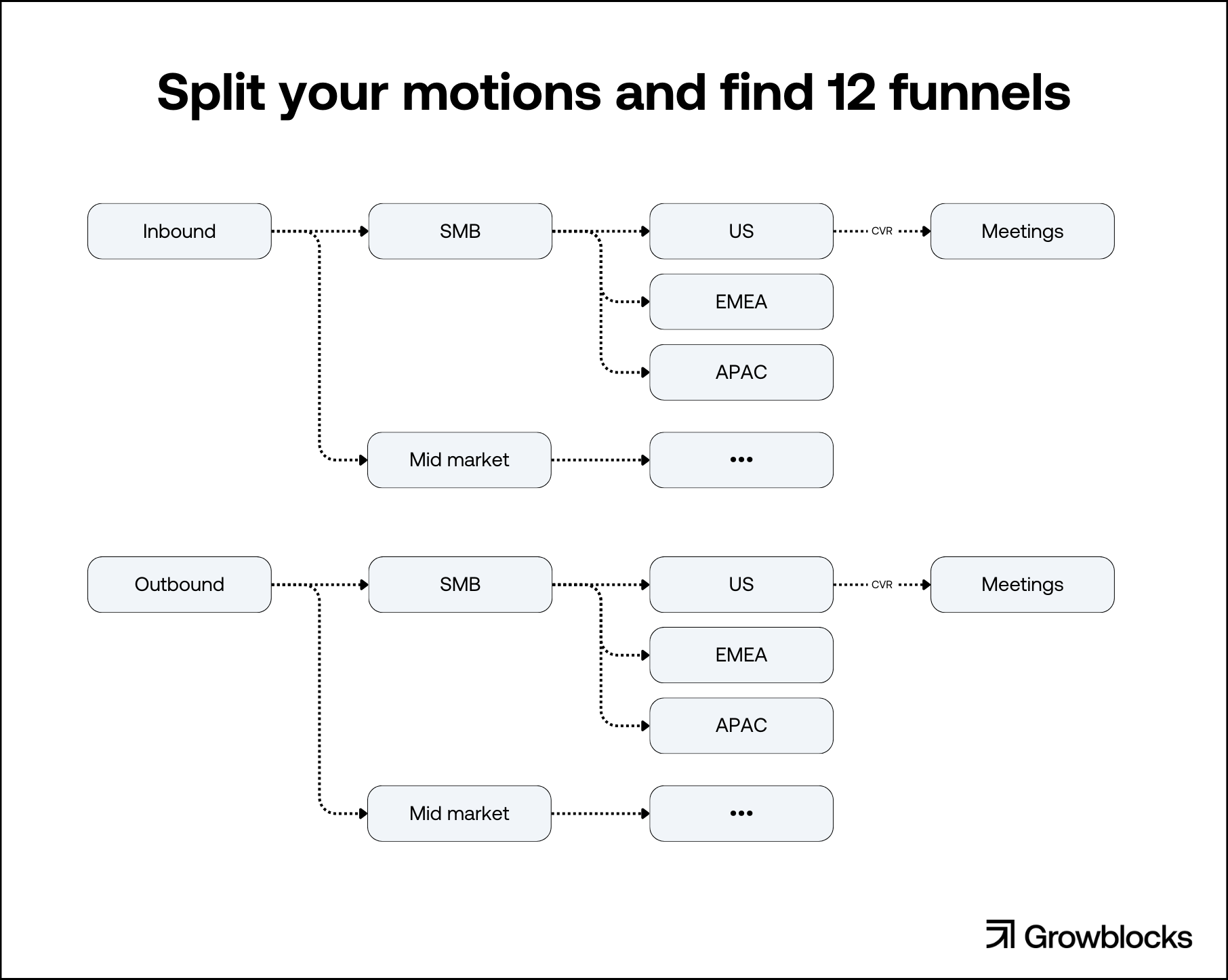
What Your Funnel Isn’t Telling You
Read time: 5 minutesExec Summary
- Production lines are the lifeblood of any factory
- Each product has its own line
- Why don’t we treat GTM the same?
- Blended funnels make true visibility impossible
- They hide problems and limit strategic decision making
- You can’t optimize something without being able to see it
- So how do we split each GTM motion into their core funnels?
- And how do we implement this in our tech stack?
- This isn’t the only lesson on building a revenue factory
- Join USC and Growblocks for a free webinar on June 13
- We’ll be going deep on this topic and more
- Space is limited, reserve your spot soon!
What makes a factory fast, efficient, and – well, a factory?
Production lines.
And not just a production line, but segmented lines for each product.
Imagine a car factory with a single lineup of machines, where parts of minivans and parts of sports cars are all mixed together, with zero visibility into which belongs where. It would be a mess, right?
So why do we treat our GTM motions the same way?
The idea of a “revenue factory” isn’t new, but this critical aspect of the analogy is usually missed or misunderstood.
We frequently look at multiple go-to-market motions through the lens of a singular funnel, which creates a big problem. Especially if our goal is revenue efficiency and allocating resources in the most profitable way possible.
The Problem with Averages
What happens when we try to analyze the data of multiple go-to-market motions by looking at total pipeline, total bookings, and a blended funnel? Let’s assume we at least separate our funnel into inbound and outbound.

But the reality is, even if you’re only running one or two motions, you actually have many more funnels than this.
We all agree that there’s a difference between the way you handle inbound vs outbound, right?
But what about all the other markets, regions, and segments?
- Mid-market vs. SMB
- US vs. EMEA vs. APAC
- Product A vs. Product B
They all perform differently. Each market will show different behavior – due to your team or the product Geo fit. Each company size will have drastically different needs (ie, SMB vs Enterprise).
So lumping them together into only 2 funnels makes little to no sense.
In this case, let’s take our motions and split them by market and region. Now all of a sudden, our unblended funnel looks like this:

This new view is how our GTM really looks (whether we like it or not). I bet it’s a lot more complicated than you thought, right?
In our example here, splitting our motions results in 12 separate funnels.
And if we want to improve the efficiency of our funnel, we need to start thinking about those 12 funnels… not just the 2 we had previously.
Since each funnel or “production line” in our revenue factory has different needs, different inputs, and different strategies, an aggregated view is going to hide problems and make strategic decisions impossible.
Some part of you might say, “Wait, what if we just break it down all the way to the individual – meaning the AE? What if we just optimized the AE as the ‘most broken down segment’ of the funnel?”
The problem is that AEs only cover a short part of the funnel.
Splitting it into these higher-level segments allows you to actually scan the full funnel.
Because most of the inefficiencies don’t sit with an AE. They happen before they even hit his or her pipeline.
And now what?
Realizing the depth of your funnel is insightful, but it can also be overwhelming.
You can barely keep up with reporting accurately on your inbound and outbound funnels. Now I am telling you it’s really 6x that? … I know.
But this practice is critical for gaining accurate visibility into your business.
And you can’t optimize something without being able to see it.
Mixing lots of inefficient motions and segments won’t magically create efficient ones. This way of looking at your funnel now gives you a wide range of options for what to fix and improve.
The next step is to implement this model into your tech stack. Which is where we at Growblocks come in. Want to learn how? Well, we have some good news…
Join Us For Our Free Webinar!
Next Thursday, June 13, at 12PM EST / 6PM CET!
Production lines aren’t the only lesson in building a hyper-efficient revenue factory. USC and Growblocks are teaming up to dig deeper into the revenue factory model and how you can implement these strategies into your own business.
This talk will show you how RevOps can better support revenue teams, identify the root causes of common issues, and generate more revenue without adding more resources.
Space is limited, so reserve your spot soon!
When you’re ready, here’s how we can help:
Get a Free 1:1 Revenue Efficiency Workshop
Get one of our Senior Revenue Strategists to yourself for 1 hour and leave with a plan to increase the money-making power of your go-to-market operations.
Hire Us!
Bring us on as your Strategic RevOps Team and realize the growth potential of your revenue engine. There are 3 ways to work with us.
Get more tips like these, sent right to your inbox.
Subscribe for fresh, relevant revenue growth tips delivered every week.
